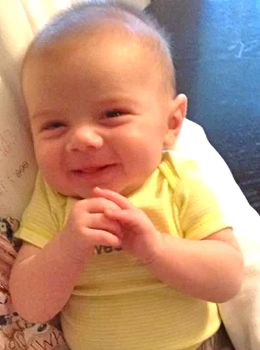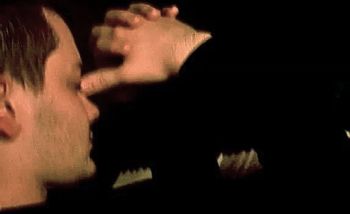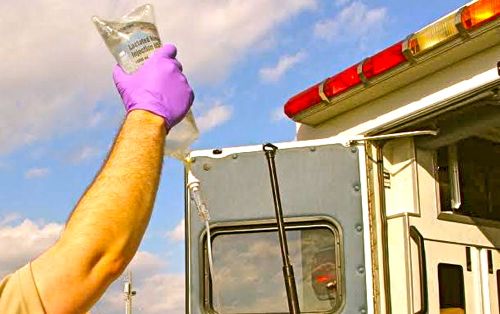ONE MORE SET JUST WON’T DO
 A few minutes later, the pause came once again. The room hushed as all eyes gazed at the flat line on the cardiac monitor. My hands, still encircled around Finley’s chest and back, froze in suspended animation as I watched and prayed for our efforts to produce some sign of hope.
A few minutes later, the pause came once again. The room hushed as all eyes gazed at the flat line on the cardiac monitor. My hands, still encircled around Finley’s chest and back, froze in suspended animation as I watched and prayed for our efforts to produce some sign of hope.
Finally, the silence was broken by the attending ER doctor. Before the reluctant motion to cease efforts was given, we all knew and concurred. Baby Finley was gone. I looked down at my hands, still wrapped around his small torso, and slowly pulled them away. He was pronounced dead.
An overwhelming feeling of disgust flooded my head as I turned and walked out of the room. I peeled my gloves off, wiped the sweat from my forehead and leaned against the stretcher in the hallway, head down. Gripping its rails, I finally heard what I had dreaded as family entered the quiet room behind me. A mother’s cries of agony are a sound that no amount of training or experience can prepare you for, and that remain forever etched in my memory.
I stared blankly at the empty stretcher that needed to be cleaned and prepared for the next run. This wasn’t my first infant or child death case. It wouldn’t be the last. Regardless, I didn’t feel at all strong and brave standing in that hallway. My mind began to flash back to an elderly cancer patient that I had successfully brought back to life not long ago. In the midst of today’s loss, the anticipated question began to fill the air: “God, why?”
 “In this was manifested the love of God toward us,
“In this was manifested the love of God toward us,
because that God sent his only begotten Son into the world,
that we might live through Him.”
In that moment, another deeply programmed thought had taken hold. In this line of work, you can’t always rely on what you feel. You have to rely on what you know. Standing there over that stretcher, truth had already taken root in my life, and the questions gave way to trust.
God doesn’t need to save a life to prove His love. He proved it by giving His own Son’s life on the cross.






